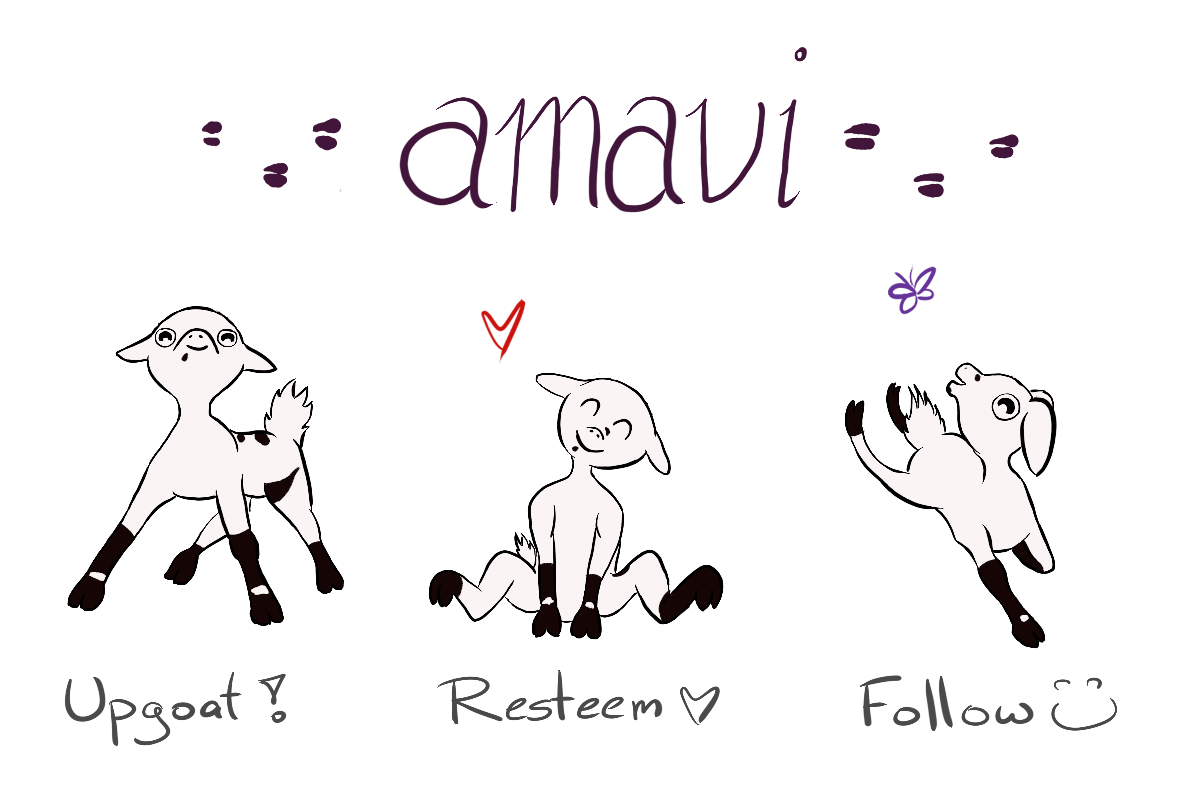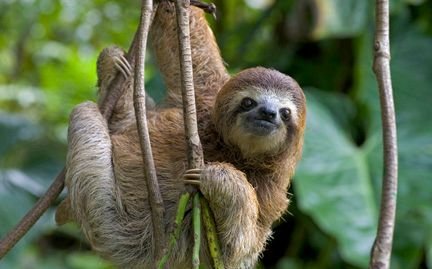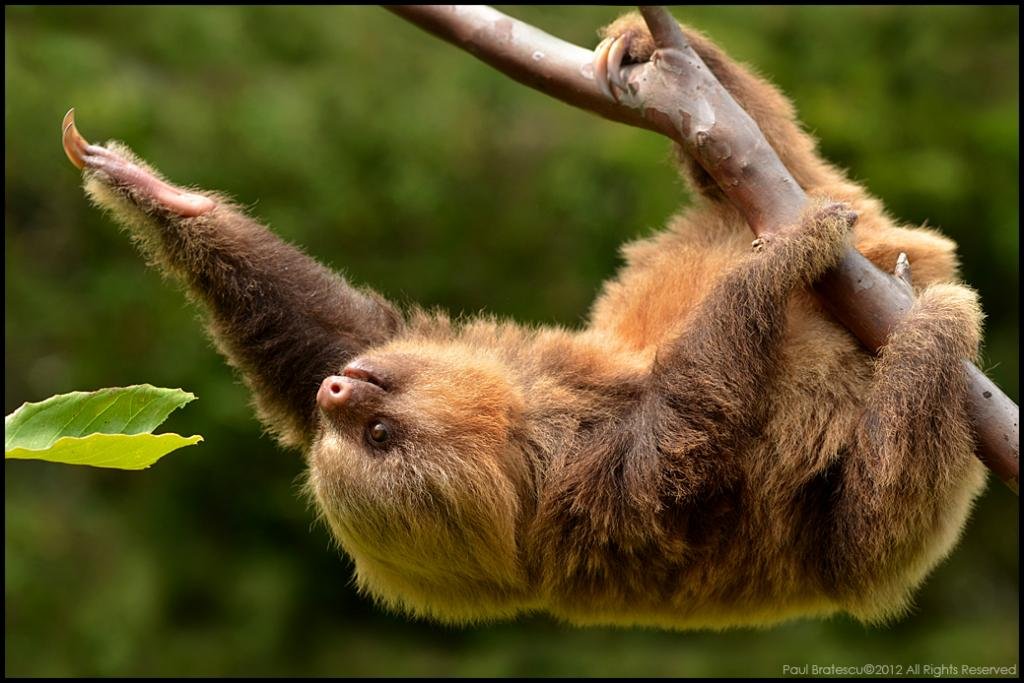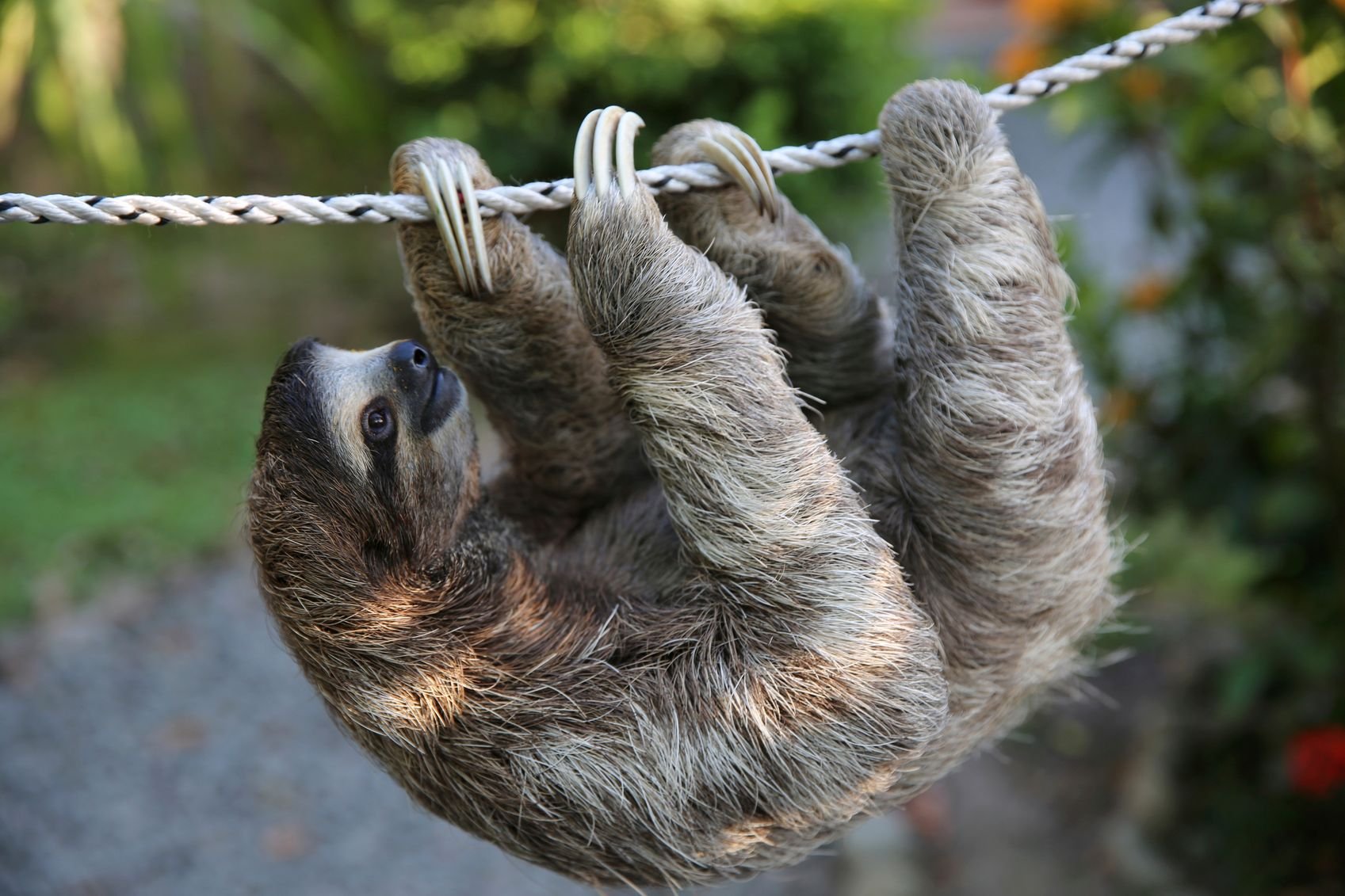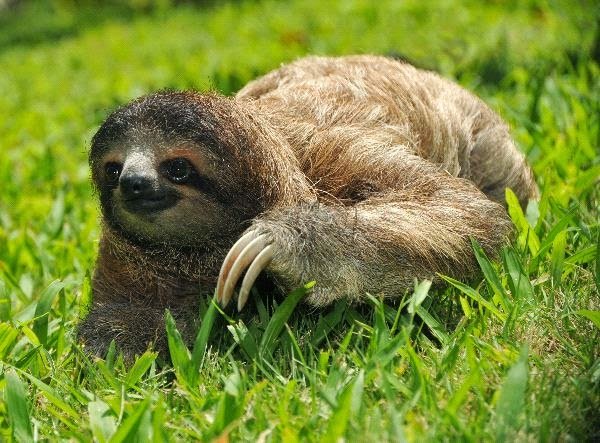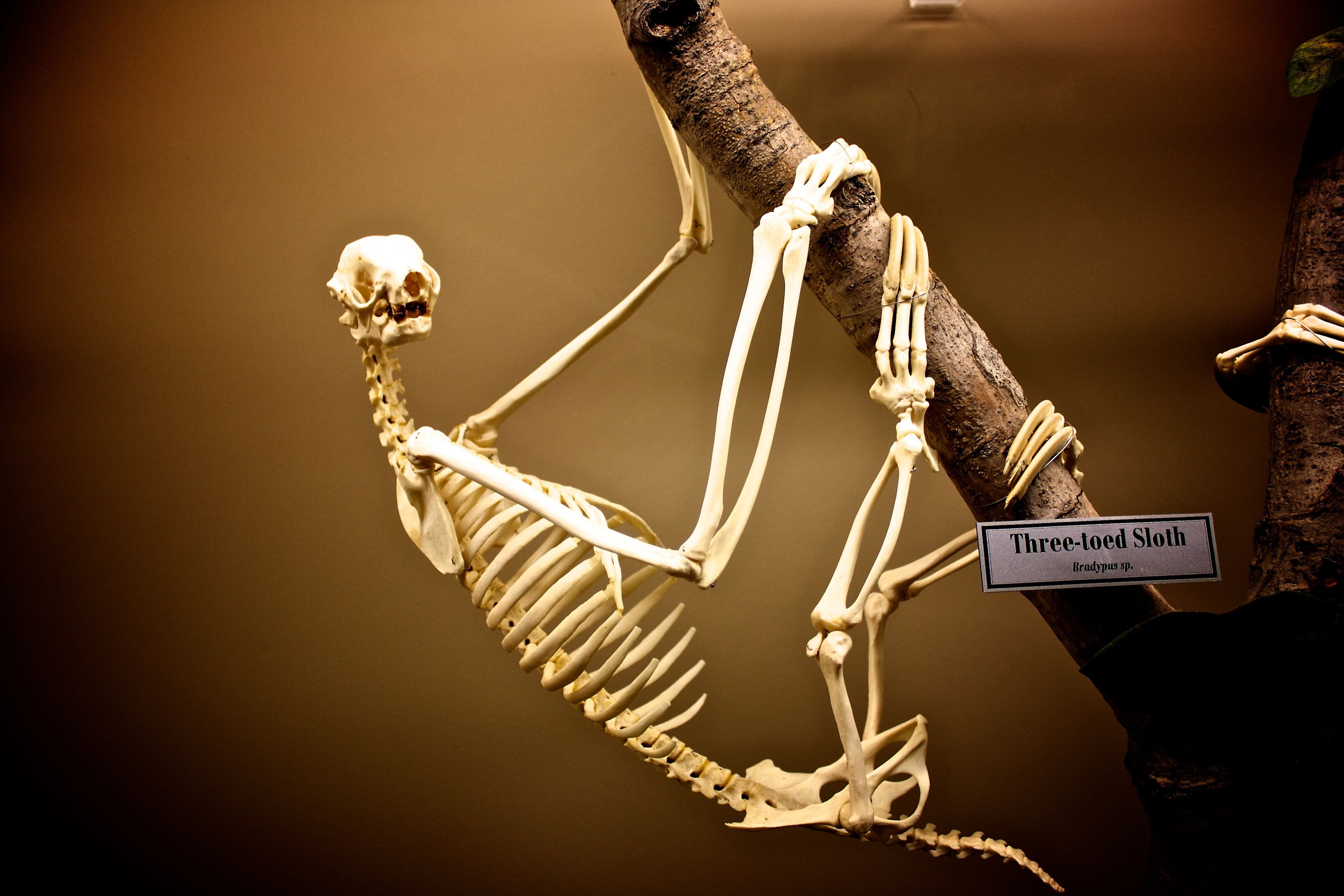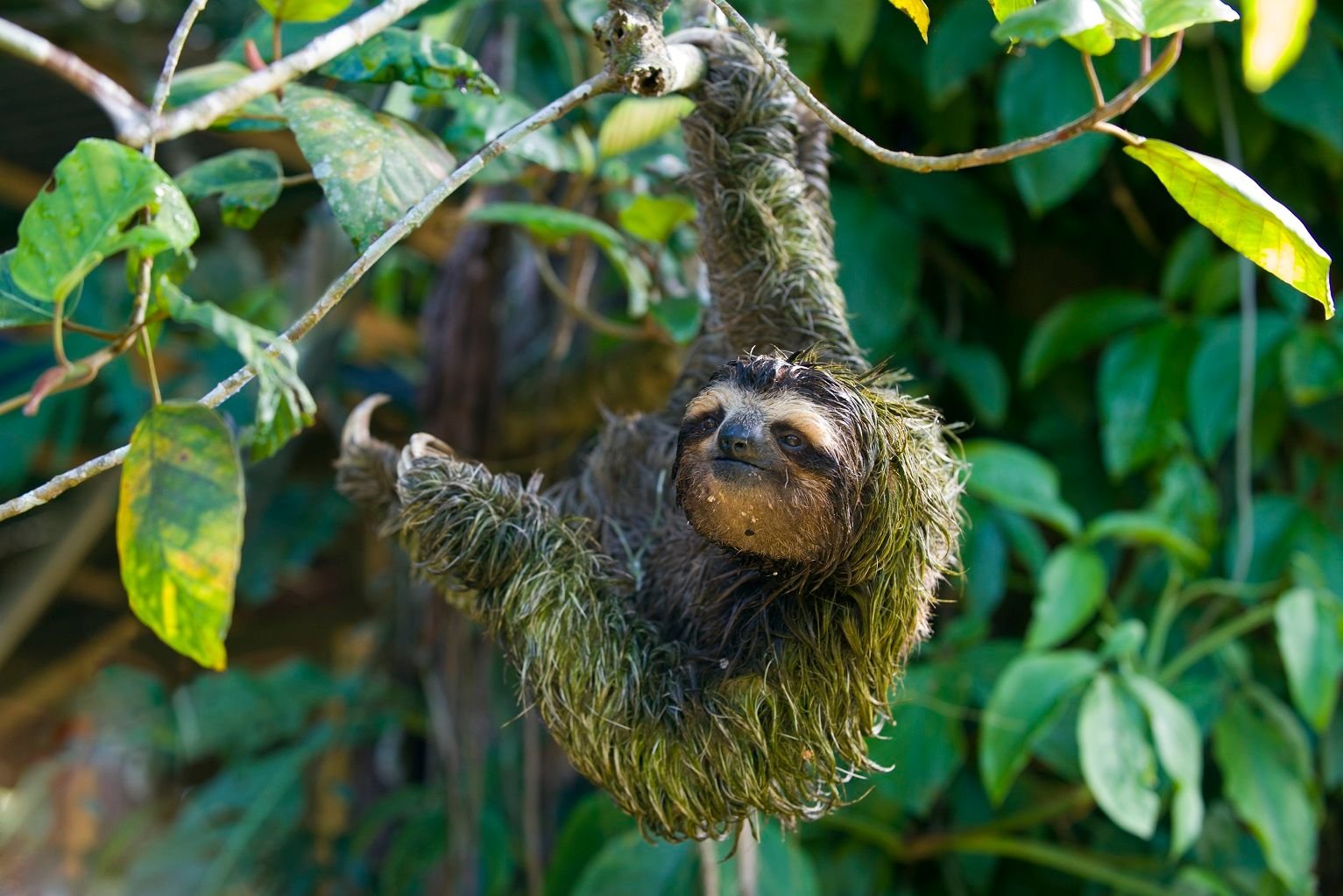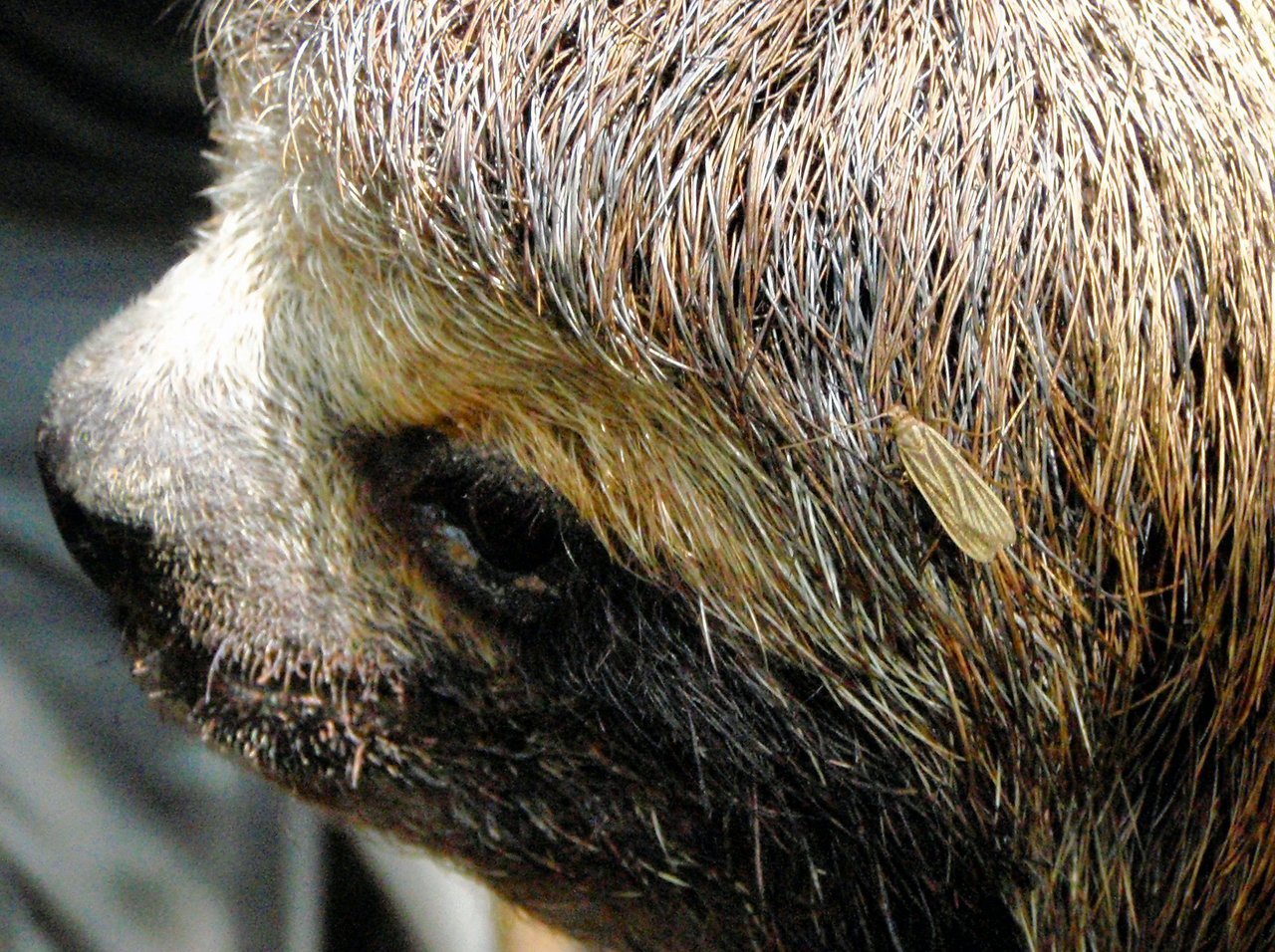Becoming one of the worlds most popular animals, they are loved for their cute dopey looking faces, wet noses and their slow life. The creature I am talking about is indeed the Sloth, to really get an idea of just how popular these animals have become you need only know that my Zoos waiting list to "meet" them is a year long, they are increasingly becoming ambassadors for their wild cousins.
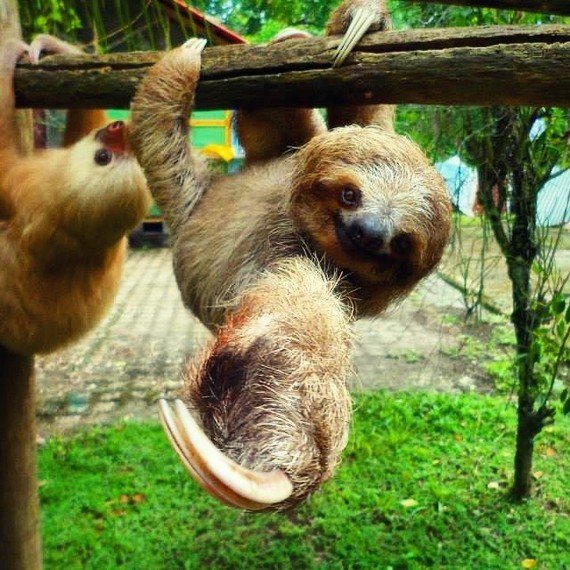
Sloth Anatomy and Difference in Species
Whilst the difference in claws is the distinctive difference between the two species, it is far from the only one, at a glance most people would assume that the two genera were very closely related but they are quite distant from one and other when viewing their family trees.
Two-toed Sloths are more closely related to an extinct species of ground Sloth, specifically from the family Megalonychids, whereas it is currently unknown which ground-dwelling sloth taxa Three-toed Sloths evolved from and some researchers believe they may have evolved from another Arboreal Sloth and simply retained the trait.Three-toed Sloths grow to a maximum height of 2 foot and on average weigh a little under 9 lbs and live solely in rainforest environments, key differences separating them from their two-toed distant cousins include:
• Three-toed Sloths have nine vertebrae in their neck whereas Two-toed Sloths only have six, they are also capable of rotating their head 270° in either direction.
• Three-toed Sloths have twenty-eight ribs whereas Two-toed Sloths have forty-six.
• Three-toed Sloths have a small tail, Two-toed Sloths have no tail.
• Two-toed Sloths have arms that are about the same length as their legs, whereas the Three-toed Sloth has much longer arms than legs.
• Three-toed Sloths have a longer neck and have smaller eyes than those observed in Two-toed Sloths.
These differences are quite dramatic in an evolutionary sense and would take a very long period of time to develop, this only reinforces the evidence that the two species are distantly related.
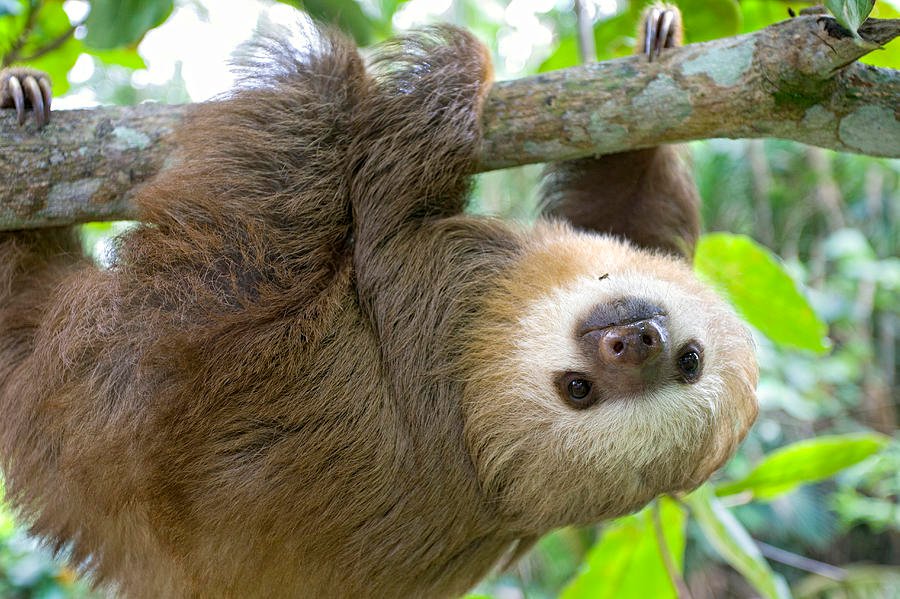
Lazy Sloths
Aside from energy expenditure, the Sloths laziness is also a form of defence from predators, as Sloths live their lives in energy-saving mode they spend the majority of their day in an unmoved state, sometimes spending up to 18 hours a day completely still, their colouration allows them to blend with in with the rainforest canopy and they rarely react to environmental changes, as such tracking down a sleeping Sloth is a difficult task.
A key factor linked with metabolic activity is warmth, every metabolic action produces warmth, warmth which is also needed for activity and in warm-blooded animals works as a constant feedback loop, warmth is used, warmth is generated. In virtually all Mammals this factor leads to the animal having the ability to maintain a constant core body temperature, this allows the animal to be constantly ready for activity should it be needed. The Sloth does not follow this rule, its metaphorical central heating system is just as lazy as the Sloth itself and its body temperature can vary vastly throughout the day.In one study they observed a body temperature of 36-38C during the peak midday temperatures which fell to 30-32C by 6AM the next morning, further study also revealed that physical activity does not result in the generation of heat in the same way it does in other Mammals, this lead the researchers to believe that the Sloth gains most of its heat from the environment similar to Cold-Blooded species, their dense fur provides insulation which locks the heat in and prevents their body temperature from fluctuating rapidly.
This discovery gives an insight in to why Arboreal Sloths are only found in Equatorial Rainforest locations, where they to exist in an area with fluctuating seasons they would likely not be able to function.
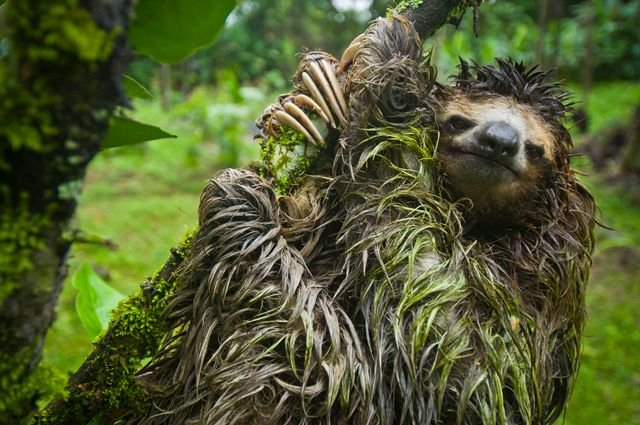
Gravity assisted life
If you’ve ever been to the gym you’ve likely had the urge to just hang from the pull-up bar to stretch out, it feels good but doing it for more than 20-30 seconds becomes difficult if you aren’t overly strong.
So how do Sloths manage to hang from a branch for up to 18 hours a day? Gravity is very much still a force in the Sloths world so how do they manage to seemingly defy its pull indefinitely?
Well it’s all down to their claws and body structure, when observing a Three-toed Sloth hanging from a branch their body almost appears to be an appendage to their Limbs and their feet and toes are completely hidden within their dense, matted fur. As they are part of the Pilosa family they have strong claws that are well adapted to digging, as commonly seen in Anteaters and Armadillos, the Arboreal Sloths have long since lost their digging abilities, and instead the claws are now completely fixed together by ligaments, as such the claws now resemble a hook more than they do a tool for digging. Craig Holdrege states:
The Sloths muscular anatomy is fine-tuned and well adapted to life amongst the branches, most of their skeletal muscle is made up of larger retractor muscles which allow animals to hold things and pull things toward them. This means that Sloths are 100% in their element when they are hanging upside down as with Gravity pulling them down, they are only required to pull against the force.All body movements, or the holding of a given posture, are made possible by muscles, which are rooted in the bones. Muscles work by means of contraction. While clinging, for example, some muscles in the limbs — the retractor muscles — are contracted (think of your biceps) while other muscles — the extensor muscles — are relaxed (think of your triceps). When a limb is extended (when the sloth reaches out to a branch) the extensor muscles contract, while the retractor muscles relax. All movement involves a rhythmical interplay between retractor and extensor muscles.
This comes as a downside however, and Three-toed Sloths anatomy is almost completely useless on the ground, they have very little push strength and as such struggle to even support their own body weight when travelling on the ground, due to this they often crawl along the rainforest floor using the loose dirt and branches as footholds to pull themselves along.
With their territory gradually becoming more urbanised this poses a very serious problem to the Sloth, as they cannot pull themselves along smooth surfaces such as Concrete, just crossing a road can take the Sloth multiple hours as it struggles to find a foothold, this leaves them open to predators or car-strikes.
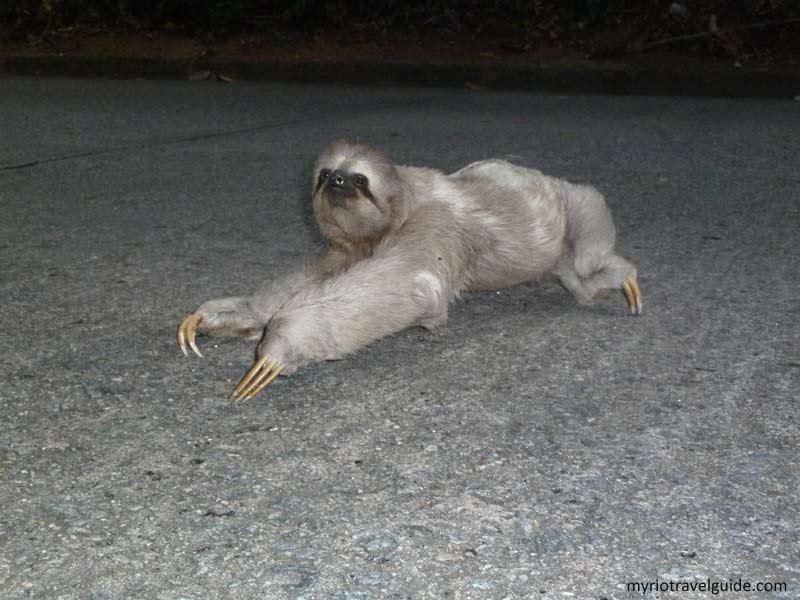
The Sloth is a Habitat
There are several insect species that are entirely Sloth-specific, in that they share a symbiotic relationship with no other organism than the Sloth. Insects such as Moths, Beetles and Mites spend the entirety of their adult form living on or within the Sloths matted Algae-laden fur, they are neither parasitic to the Sloth, nor do they feed on the algae, their food source is unknown but likely consists of nearby vegetation or treebark.
The safety of the Sloth allows Insects to reach sexual maturity, and when the Sloth descends to the Rainforests floor to go to the toilet the Insects take advantage of the Sloth once more, they choose to lay their eggs in the Sloths faeces, this will give the larvae a source of nutrition which will allow them to develop. Once the larvae have pupated they will fly off in search of a Sloth to inhabit.Amazing Sloth facts
• Sloths are very good swimmers, the Three-toed Sloth is more than capable of swimming several hundreds of metres at a time, they use their long limbs and previously mentioned Retractor muscles to glide through the water, they aren’t particularly fast though they are graceful swimmers.
• Sloths very rarely choose to lay on their front, if the arms and legs are not extended and supporting their body weight, a Sloth that spends a prolonged time on the ground will begin to develop raw feet from the unaccustomed pressure from the body weight on top of the limbs.
• Sloths have the longest Gestation period of any mammal in relation to their size and can last for up to 9 months, furthermore Sloths can survive for up to 30 years which is unusually long for a small Mammal, though owe it to their passive lifestyle.• Like Ruminants, Sloths have a four-chambered stomach which is huge in relation it’s body, it fills most of the abdominal chamber and when full can account for as much as 30% of the Sloths overall weight.
• Sloths are the only Mammalian species other than Manatee that do not have seven neck vertebrae.
• Three-toed Sloths have very few facial muscles, their smiling facial expression is a fixed colouration, they also cannot move their eyes, to look at objects the Sloth must turn its head towards the object.
• Sloths have vicelike grip and if the animal needs to be moved it may sometimes be easier to cut the branch that the Sloth is on as, opposed to trying to remove the Sloth from the branch.
• Sloths can grip to a tree vertically using only their hind legs, they are then capable of extending backwards past a 90° angle, they can hold this position for long periods of time.
• Up to 700 Sloths can live within a 1 Km area, though they are strictly solitary creatures outside of the mating season.
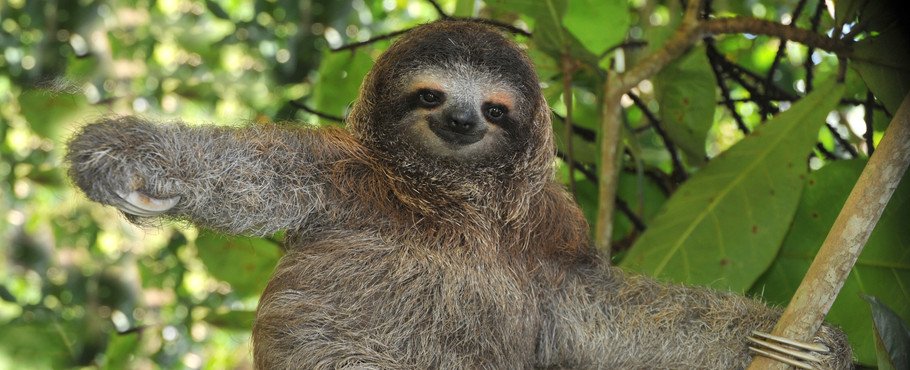
Amavis Amazing Poo Fact
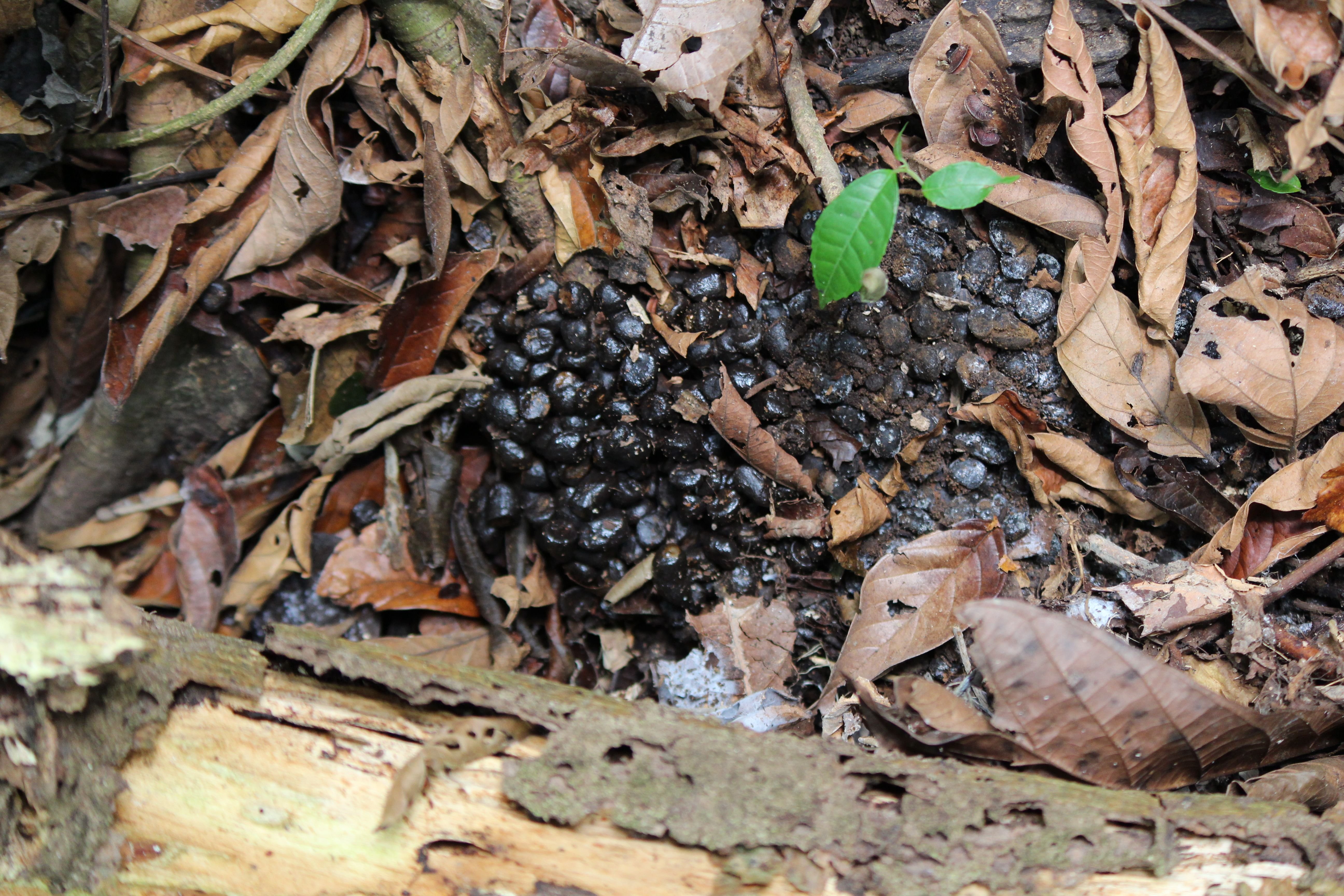
The Sloths digestive system works just as slowly as the rest of the Sloths characteristics, Sloths will generally eat for 5-7 days before they decide that they need to defecate. When the Three-toed Sloth needs to go to the toilet it will descend from the treetops down to the Rainforest floor, once there the Sloth will find a patch of fallen leaves / soil, the Three-toed Sloth will then squat over the leaves and proceed to make a hole in the leaves using its small stumpy tail. Once the hole has been made the Sloth will defecate and may lose as much as 3 lb’s in bodyweight, it will then cover the hole with leaves where the faeces will act as fertilizer, the Sloth then retreats to the canopy where it will spend another week or so feeding.
Here is Sir David explaining this process
If you enjoyed this edition of Amazing Animals you may be interested in some of my previous posts:
The Hippopotamus
The Platypus
The Wandering Albatross
The Lobster
The Polar Bear
Any many more...
Content Sources
All about Sloths
Nat Geo Sloths
Sloth differences
Evolutionary Edges
